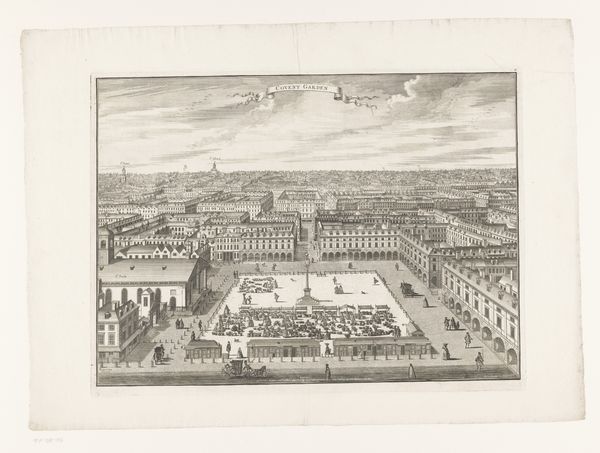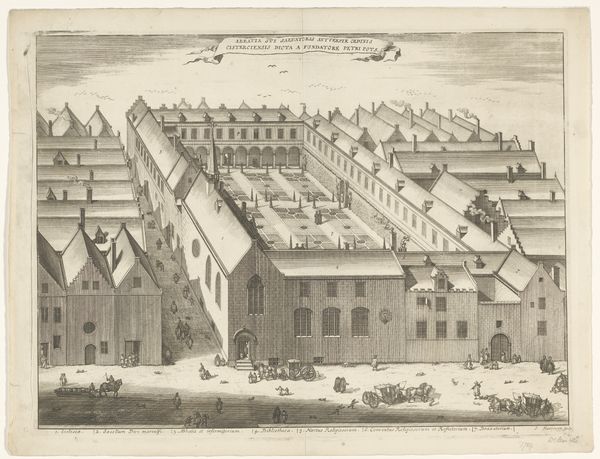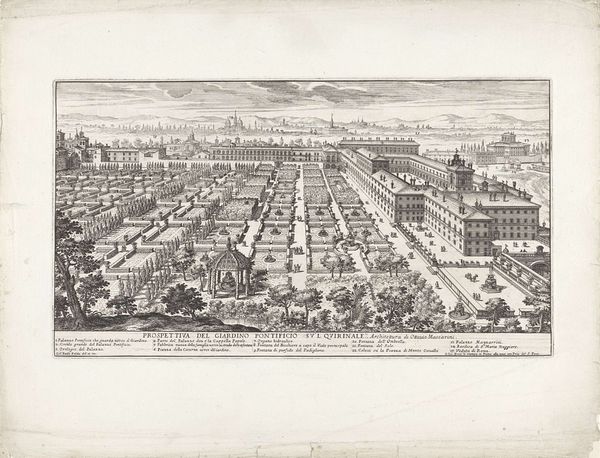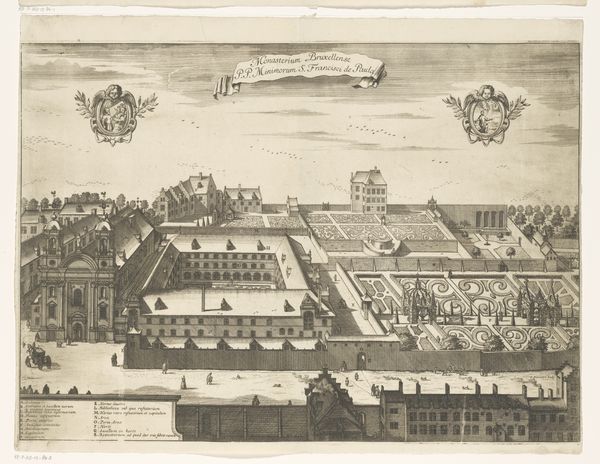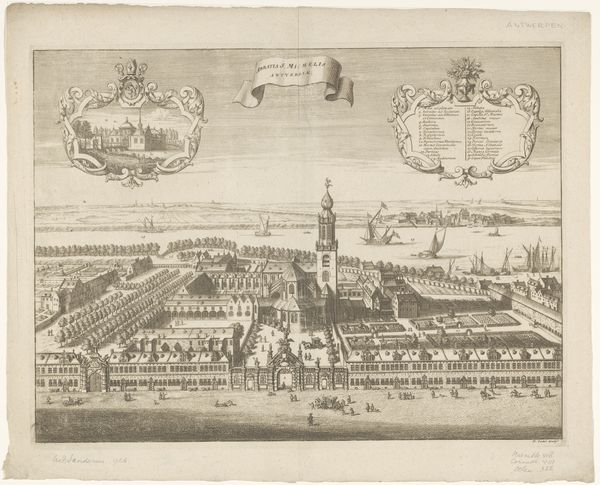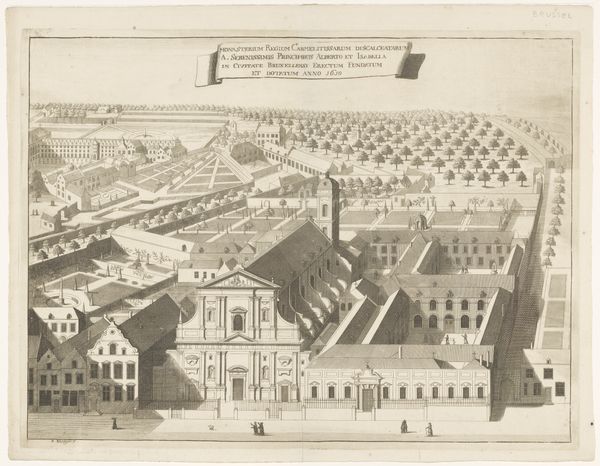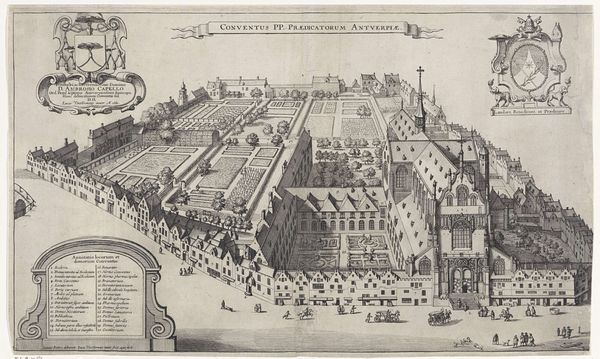
drawing, print, paper, ink, engraving, architecture
#
pen and ink
#
architectural sketch
#
drawing
#
baroque
#
pen drawing
# print
#
landscape
#
paper
#
ink
#
cityscape
#
engraving
#
architecture
Dimensions: height 363 mm, width 471 mm
Copyright: Rijks Museum: Open Domain
This detailed depiction of the Regularissenklooster Jericho in Brussels was created by Jacobus Harrewijn using engraving, a process with a rich social history. Engraving, unlike painting, is a fundamentally reproductive medium. It relies on skill and labor to translate images into a format that can be endlessly multiplied. Look closely at the lines that define the architecture and landscape. Each one was carefully incised into a metal plate, a time-consuming process demanding precision. The very act of engraving speaks to a burgeoning market for images in the 17th and 18th centuries. This wasn't just about art; it was about information, about documenting places and disseminating knowledge. Prints like these catered to a growing middle class eager to consume visual representations of the world. The act of engraving transforms the artistic gesture into something closer to industrial production. Considering this print, it asks us to reflect on how art becomes entangled with commerce, and how the value we assign to images is shaped by the labor and technology involved in their creation.
Comments
No comments
Be the first to comment and join the conversation on the ultimate creative platform.

